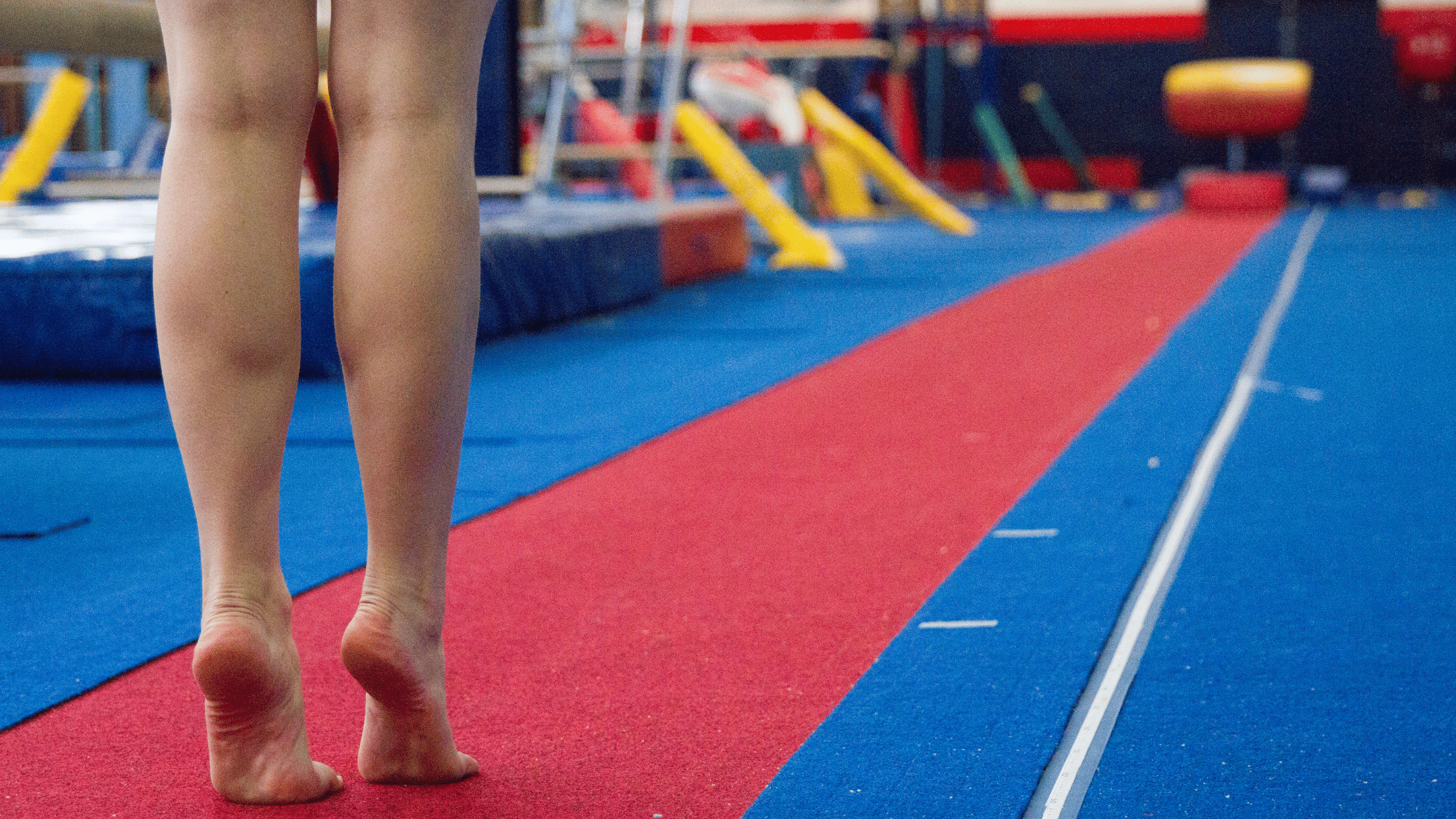Overall Fitness in Gymnastics: Workout Tips and Balancing Your Routine

Licensed Physical Therapist, PT, DPT // EW Motion Therapy Liberty Park
Gymnastics is a sport that demands an extraordinary blend of strength, flexibility, balance, and control. To excel, gymnasts must develop a comprehensive fitness regime that complements their training schedule. We love helping our gymnasts at EW Motion Therapy do this through customized exercise programs they can balance with their training, but you may decide that our services don’t fit your needs. You can still read on as we delve into the importance of overall fitness for gymnasts and offer practical workout recommendations. By understanding how to balance a fitness routine with a training schedule, gymnasts can optimize their performance, prevent injuries, and enjoy a fulfilling athletic career.
The importance of overall fitness in gymnastics
Gymnastics is not just about mastering routines and perfecting techniques; it's about building a strong, resilient body capable of performing extraordinary feats. The importance of overall fitness in this sport cannot be overstated. A well-rounded fitness regimen ensures that gymnasts have the endurance, strength, and flexibility required for training and competition.
Strength: the foundation of gymnastic skills
Strength is a critical component of a gymnast's fitness. It's not just about having powerful muscles; it's about developing the right kind of strength that translates into better performance. Core strength, for instance, is vital for stability and balance, upper body strength is essential for maneuvers on the rings, bars, and vault, and lower extremity strength is essential for power and control.
Flexibility: more than just stretching
Flexibility is another cornerstone of gymnastics fitness. It allows gymnasts to perform a wide range of movements without the risk of injury. It's not just about stretching; it's about maintaining a balance between muscle strength and suppleness, ensuring that the body can handle the demands of the sport.
Gymnasts require various types of flexibility for optimal performance and injury prevention. Static flexibility is crucial for holding positions and demonstrating control, while dynamic flexibility is essential for executing explosive movements like flips and jumps. Active flexibility allows gymnasts to control their limb movements without assistance, important for balances and leg lifts. Passive flexibility, achieved through assisted stretching, helps in increasing overall range of motion. Additionally, joint flexibility or hypermobility can be advantageous for achieving the extreme positions required in gymnastics. Each type of flexibility contributes to the aesthetics, execution, and safety of gymnastic routines.
Endurance: the overlooked essential
Endurance often goes unnoticed in gymnastics, but it plays a crucial role. A gymnast's ability to maintain high-quality performance throughout a routine or a long training session relies heavily on endurance. Similar to flexibility, gymnasts require multiple types of endurance, such as:
- Muscular endurance: This type of endurance is vital for gymnasts. It refers to the ability of muscles to perform repeated contractions over a period of time without fatigue. In gymnastics, this is crucial for maintaining the strength and form required for lengthy routines, especially during floor exercises or on the balance beam.
- Aerobic endurance: While gymnastics routines are typically short and intense, aerobic endurance is still important. It helps gymnasts recover more quickly between routines and reduces overall fatigue during training sessions and competitions. Good aerobic capacity allows for more efficient oxygen delivery to muscles, enhancing performance and recovery.
- Anaerobic endurance: Gymnastics often involves short, intense bursts of activity, such as tumbling passes, vaults, and dynamic movements on the bars. Anaerobic endurance enables gymnasts to perform these high-intensity activities effectively. This type of endurance relies on the body's ability to function without oxygen for short periods, using energy stored in muscles.
Workout recommendations for gymnasts
To achieve peak performance, gymnasts must tailor their workouts to address the specific demands of their sport. This section provides a range of exercises and workout ideas that focus on building the strength, flexibility, and endurance necessary for gymnastics.
Strength training
Strength training for gymnasts should focus on functional movements that mimic the sport's demands. Exercises like squats, lunges, pull-ups, and push-ups build the foundational strength needed for gymnastic skills. Incorporating exercises that target core stability, such as planks and Russian twists, is also essential.
In gymnastics, the combination of bodyweight and resistance exercises is essential for comprehensive physical development and performance enhancement. Bodyweight exercises improve functional strength and movement control, directly translating to gymnastic skills, while resistance training offers targeted muscle development and the ability to systematically apply progressive overload. This blend not only aids in building core strength, flexibility, and injury prevention but also ensures balanced muscle growth and overall physical conditioning. Incorporating both types of exercises in training routines provides gymnasts with the strength, power, and endurance necessary for their sport, while also maintaining variety and interest in their workout regimen. This comprehensive approach is crucial for both skill progression and long-term athlete engagement in gymnastics.
Flexibility training
Flexibility training should be a daily practice for gymnasts. It can include a mix of dynamic stretches, which are great for warming up, and static stretches for cooling down. Practices like yoga and Pilates can also enhance a gymnast's flexibility and body awareness.
Endurance workouts
Endurance workouts for gymnasts should increase cardiovascular fitness without adding unnecessary bulk. Activities like swimming, cycling, or light jogging can be excellent options. Interval training, alternating between high-intensity bursts and rest periods, can also be beneficial.
Balancing fitness routines with gymnastics training
Finding the right balance between general fitness routines and gymnastics training is crucial. It's about ensuring the body gets the exercise it needs without overtraining or under-recovering.
The timing of workouts is essential. Strength and flexibility sessions from intensive gymnastics training can be scheduled on alternate days. You can integrate endurance workouts on lighter training days or during the off-season to maintain cardiovascular fitness.
Additionally, recovery is as important as training. Gymnasts must listen to their bodies and allow adequate time for rest and recovery. This includes getting enough sleep, practicing active recovery techniques, and incorporating rest days into their training schedules.
By focusing on strength, flexibility, and endurance and balancing these elements with their training, gymnasts can enhance their performance, prevent injuries, and enjoy a long, healthy career in the sport. Remember, it's not just about training harder; it's about training smarter. With the right approach, gymnasts can achieve their full potential and soar to new heights in their endeavors. We consider it a privilege to help our gymnasts at EW Motion Therapy improve their performance and reach their goals. If you want to learn more about how physical therapy can help you excel in your gymnastics career, click the button below to download our answers to 20 frequently asked questions.


